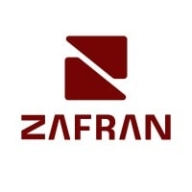


Microsoft Defender Vulnerability Management and Unified Vulnerability Management are contenders in the vulnerability management sector. Microsoft Defender leads in pricing and support, while Unified Vulnerability Management is favored for its features.
Features: Microsoft Defender offers seamless integration with Microsoft ecosystems, risk assessment, and automated remediation. Unified Vulnerability Management provides comprehensive scanning capabilities, detailed reporting, and wide support for third-party applications.
Ease of Deployment and Customer Service: Microsoft Defender ensures an easy setup within Windows and efficient customer support. Unified Vulnerability Management supports various operating systems, offers customization, and has prompt, knowledgeable customer service.
Pricing and ROI: Microsoft Defender provides competitive pricing and strong ROI, especially for Microsoft users. Unified Vulnerability Management involves higher initial costs but delivers substantial ROI through its rich features.


Zafran Security integrates with existing security tools to identify and mitigate vulnerabilities effectively, proving that most critical vulnerabilities are not exploitable, optimizing threat management.
Zafran Security introduces an innovative operating model for managing security threats and vulnerabilities. By leveraging the threat exposure management platform, it pinpoints and prioritizes exploitable vulnerabilities, reducing risk through immediate remediation. This platform enhances your hybrid cloud security by normalizing vulnerability signals and integrating specific IT context data, such as CVE runtime presence and internet asset reachability, into its analysis. No longer reliant on patch windows, Zafran Security allows you to manage risks actively.
What are the key features of Zafran Security?
What benefits can users expect from Zafran Security?
In industries where security is paramount, such as finance and healthcare, Zafran Security provides invaluable protection by ensuring that only exploitable vulnerabilities are addressed. It allows entities to maintain robust security measures while allocating resources efficiently, fitting seamlessly into existing security strategies.
Microsoft Defender Vulnerability Management enables organizations to identify vulnerabilities, manage patches, and fortify threat detection. It offers endpoint assessments, cloud incident management, and dynamic security through Microsoft's Security Scorecard integration.
Organizations leverage Microsoft Defender Vulnerability Management for advanced threat detection and response. It provides robust tools for vulnerability assessment and cloud incident management, integrated with Microsoft's Security Scorecard to enhance dynamic security profiling. Key features include automatic patch deployment, security configuration management, and seamless integration with Microsoft platforms, benefiting both on-prem and cloud environments. Organizations can track vulnerabilities with severity-based reports, helping manage outdated software and minimizing threat exposure.
What are the key features of Microsoft Defender Vulnerability Management?In healthcare, Microsoft Defender Vulnerability Management helps manage compliance with health regulations, while in finance, it aids in securing sensitive data from cyber threats. Manufacturing sectors benefit from its patch management, keeping operational technology systems less vulnerable to disruptions.
Unified Vulnerability Management streamlines the identification and management of security risks. It's designed to enhance cybersecurity efforts by providing consolidated tools and insights for managing vulnerabilities.
Unified Vulnerability Management plays a crucial role in cybersecurity by centralizing tools and processes, optimizing risk management with real-time insights, and offering customizable reporting. Its integrated approach allows organizations to address threats promptly, ensuring a proactive security posture.
What are the key features of Unified Vulnerability Management?In sectors like finance and healthcare, Unified Vulnerability Management is implemented to meet compliance requirements and protect sensitive data. Its robust capability to manage complex environments supports integration into diverse organizational frameworks, ensuring tailored solutions for industry-specific challenges.
We monitor all Risk-Based Vulnerability Management reviews to prevent fraudulent reviews and keep review quality high. We do not post reviews by company employees or direct competitors. We validate each review for authenticity via cross-reference with LinkedIn, and personal follow-up with the reviewer when necessary.